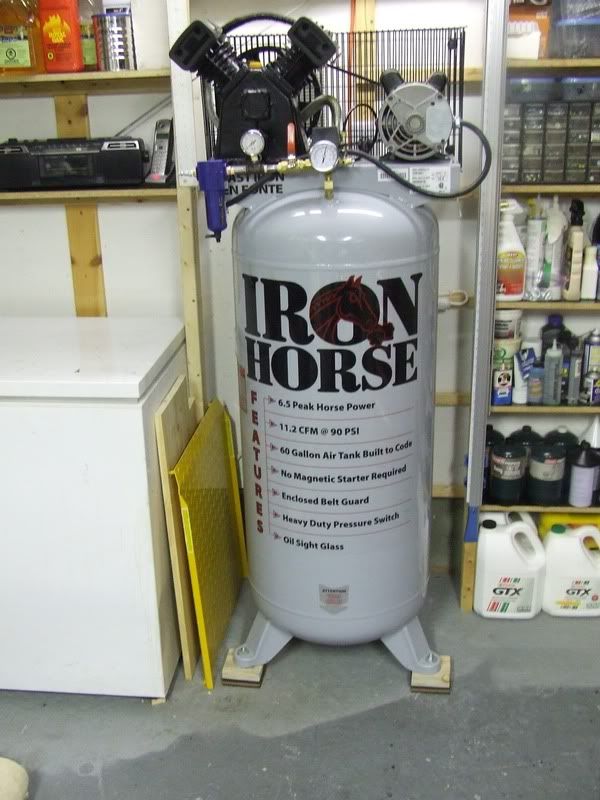Wiring a compressor
First, don't worry about whether it's a two stage or single stage; it's all about CFM at a high enough pressure to do whatever your trying to do. But sandblasters DO require high CFM. Anything you can easily get in your garage will only blast for about 10-15 minutes before you'll want to let the compressor 'catch up'. But you almost can't have a too-big unit...
As far as electrical power, a standard 40 amp dryer circuit will supply 32 continuous amps (you are REQUIRED to de-rate by 20%). But when hooking up a motor load, you also have to take into consideration current inrush; they can draw up to 500% of nameplate amps until the motor is up to speed. So in your case, try to find out a 'minimum circuit breaker' or 'ampacity' number in amps for the unit you're looking at. If it's under 40 amps, you're good to go. If you can't locate that, then look at the motor nameplate. It should have a FLA (full load amps) number on it, and don't exceed 15 amps or you'll have nuisance tripping and eventually burn up the breaker. Wire size of #10 should be fine for a cord. You do have to be careful as some of these 'consumer' motors are 'specials' and have a higher inrush than a 'standard' one. A typical standard 3 HP 1-ph 220v motor will need a 35 amp breaker and draw 17 amps under full load. If you're completely confused, send a PM and I'll try to help you.
Thirty + years in the electrical industry...
'78 E original owner
First, don't worry about whether it's a two stage or single stage; it's all about CFM at a high enough pressure to do whatever your trying to do. But sandblasters DO require high CFM. Anything you can easily get in your garage will only blast for about 10-15 minutes before you'll want to let the compressor 'catch up'. But you almost can't have a too-big unit...
As far as electrical power, a standard 40 amp dryer circuit will supply 32 continuous amps (you are REQUIRED to de-rate by 20%). But when hooking up a motor load, you also have to take into consideration current inrush; they can draw up to 500% of nameplate amps until the motor is up to speed. So in your case, try to find out a 'minimum circuit breaker' or 'ampacity' number in amps for the unit you're looking at. If it's under 40 amps, you're good to go. If you can't locate that, then look at the motor nameplate. It should have a FLA (full load amps) number on it, and don't exceed 15 amps or you'll have nuisance tripping and eventually burn up the breaker. Wire size of #10 should be fine for a cord. You do have to be careful as some of these 'consumer' motors are 'specials' and have a higher inrush than a 'standard' one. A typical standard 3 HP 1-ph 220v motor will need a 35 amp breaker and draw 17 amps under full load. If you're completely confused, send a PM and I'll try to help you.
Thirty + years in the electrical industry...
'78 E original owner






Comment